Resting your feet
Reflexology is a natural healing art based on the study and practice of the principle that there are reflexes in the body –especially on the hands and feet– that correspond to the body's organs and glands. Applying stimulation and pressure to the feet or hands has a similar effect to a total body massage.
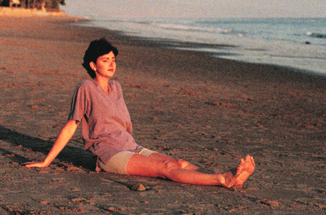
+ Daily activity and excessive physical work over short periods of time can exhaust your body, bringing on bouts of fatigue. Reflexology or reflexotherapy releases blocked energy and helps it flow. There are connections between different parts of the body. Reflexology is not an exact science, but is considered a natural healing art.
Reflexology has been used since around 3,000 B.C. particularly in China, but also in Malaysia and India. However, archeologists have found paintings referring to this technique in the Egyptian pyramids. Modern reflexology is based on the work of US physician William H. Fitzgerald, who in the early 20th century developed the ancient Oriental healing art of using pressure to relieve pains into a usable diagnostic therapy. Fitzgerald's nurses aid, Eunice Ingham, further pioneered a reflexology foot chart, which we use as a guide today and have included on this page.
FOOT REFLEXOLOGY
There are a number of reflexology zones on the body, including the hands and ears. However, the foot is the area with most concentrated energy pathways and the easiest and most effective technique to practice. We've put together a beginners guide to foot reflexology. The essential points to treat tiredness are drawn in the diagram:
- • On both feet: the areas representing the neck, shoulders, waist, spinal column, sacrum, coccyx, solar plexus, head and heart.
- • On the outer part of the feet: lower back, knee, leg and back.
- • On the inner part of the foot: the sacral, lumbar, thoracic and cervical areas. And on the instep, the hip.
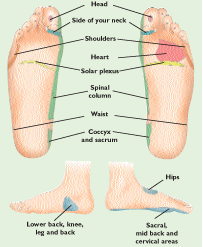
STIMULATING DETAILS
- • For tiredness a reflexology massage can be used to revitalize you at any time. However, the best time of the day to practice reflexology is in the morning because it prepares your body to start the day and to face everyday stress and taxing tasks. It can also be good to practice in the afternoon to decongest and relieve tension.
- • It's always best to use high quality essential oils and foot creams.
- • You can light incense sticks and put on soft music: taking care where you apply reflexology is a good way to improve results.
- • Don't forget to take time for a foot massage for the health of the entire body.
FOR PERSONAL RELAXATION
Reflexology, is based on the study of meridians that run throughout the whole body. Although an experienced practitioner should apply reflexology, there are massages based on this technique that you can do yourself to relieve discomfort. There are a number of techniques to treat tiredness, which activate lost or blocked vital energy.
Getting ready
Before giving yourself a reflexology massage, it's recommended to sit in a comfortable position so that you can reach your feet. Do not bend your back, because you will block the flow of your breath. Although you can give yourself a massage with your socks on, it's best to do these exercises in your bare feet. Begin with a relaxing manual technique: wrap your hand around your ankle and roll your foot with your other hand.
Self-massages that relieve
After getting ready and following the diagram with the reflex points in the feet (see Foot Reflexology box, on page 31), you can begin with the following exercises when you feel tired and to give you a pick-me-up.
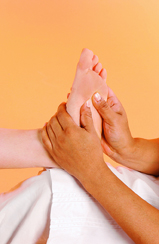
1. Begin by applying pressure to the central point in the left foot to release built up tension. This point corresponds to the heart, an area where excess tension tends to be stored.
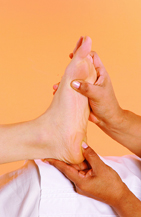
2. Press on the point that corresponds to the spinal column. One finger placed on the upper part of the foot to work the cervical bones and the other on the lower part of the foot to work the back. This massage is especially good for tense muscles caused by straining activity.
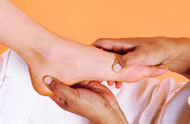
3. Activate the side of the foot, the area that corresponds to the upper back. With your other thumb, press on the heel to massage the coccyx. This allows you to open the energy flow in the vertebrae.
4. With your thumb, press on the reflex point for the chest cavity on the opposite foot. This movement promotes balance and harmony in the body and gives a sense of over-all well-being. You may feel like yawning or sighing after experiencing this relaxation technique.
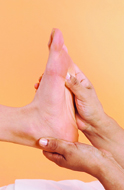
PAY ATTENTION TO YOUR BODY
Because tiredness can cause a number of symptoms, it is important to consider the messages the entire body sends to relieve the aches and ailments caused by exhaustion. Locate the reflex points in the feet that correspond to sore or tired parts of your body and apply pressure. The most effective and relaxing points tend to be the chest cavity, head, heart, shoulders and any other muscle or organ that is achy.

Comment about this article, ask questions, or add new information about this topic: